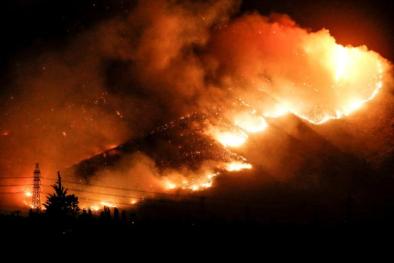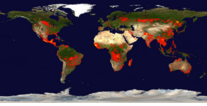Chilean Wildfires 2016 - 2017
Years of drought and extreme heat are helping fuel the worst fire disaster in Chile's history. The fires began in November 2016 and picked up in late January 2017 amid extreme temperatures that shattered Chile's all time temperature record by an almost unheard of margin of 6.1°F. As of January 31, the fires had affected an area of 547,190 hectares (1.35 million acres). Multiple studies have linked the underlying "mega-drought" in Chile to climate change, attributing increased greenhouse gas emissions to recent declines in precipitation. Regarding the extreme heat in Chile, one of the strongest findings of climate science is that global warming is dramatically amplifying the intensity, duration and frequency of extreme heat events.
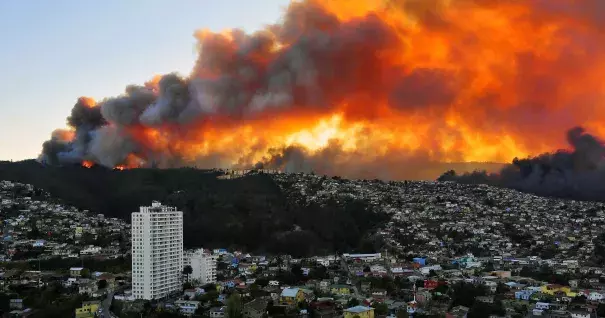
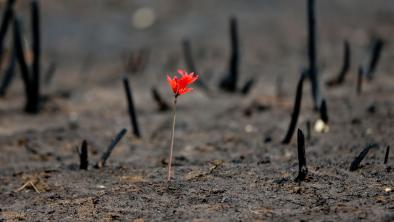
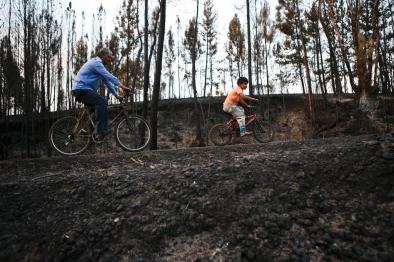

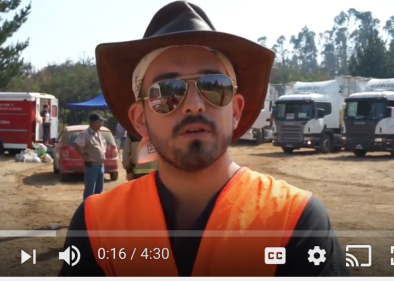
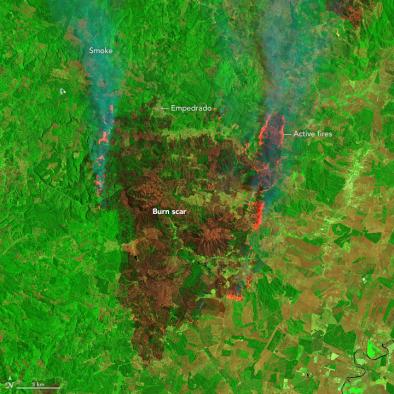
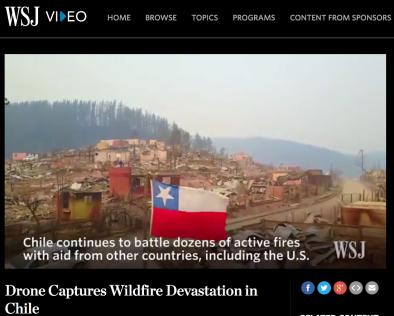
Chile's worst wildfires on record fed by ongoing drought and record heat
Wildfires started in Chile's central provinces in November 2016, growing to 49 wildfires by mid-December across the regions of O’Higgins, Maule, Biobío, Valparaíso, and Metropolitana.[1] As of January 31, the National Office of Emergencies of Interior Ministry (ONEMI) reported 119 active fires, forest fires, affecting an area of 547,190 (1.35 million acres). This is a 4,500-5,000 percent increase from the 2015-2016 wildfire season.[3]
At least 100 vineyards in the Maule and Colchagua regions have been damaged or destroyed in the blazes.[4] A total of 11 deaths have been confirmed.
Years of drought combined with an extended period of extreme heat and dry weather since December 2016 have helped to fuel the historic wildfires.
Underlying the worst wildfires in Chile's history is the worst drought on record
Since the mid-2000s, annual precipitation deficits ranging from 30 to 70 percent have afflicted most of central Chile (west coast of South America, 30-40°S). The drought has been particularly acute since 2010, leading to the region's longest-lasting and most geographically widespread water shortage phenomenon on record, with total accumulated water deficits estimated at 30 percent.[6] Referred to as the "mega-drought," this event is unprecedented in historical and paleo-climate records covering the last 1000 years.[6]
From 2010 to 2014, during the mega-drought, there have been 53 additional days in which large forest fires have burned, and the area of forest destroyed by fire in central and southern Chile increased 70 percent compared to the 1985 to 2009. In 2013 and 2014, the affected area exceeded 100,000 hectares (247,105 acres), numbers much lower than the 2015-2016 total, but that were, at the time, unprecedented in the previous 50 years.[6]
Multiple studies have identified the fingerprint of human-caused climate change on recent precipitation trends in Chile. A January 2016 attribution study estimates that 25 percent of the rainfall deficit affecting central Chile since 2010 is due to human-caused climate change.[7] A March 2016 study analyzing paleoclimate data finds the fingerprint of human-caused climate change on the observed trend since pre-industrial times in reduced precipitation over western Patagonia (south of 40°S) during the summer, autumn, and winter seasons, due to weaker westerly winds over the region.[8]
Looking ahead, a January 2017 study finds that the probability of having extreme droughts, such as the mega-drought from 2010 to 2015, increases from one to up to five events per 100 years by the end of the century.[9]
Chile's new all time heat record caps its warmest decade on record, consistent with global warming trend
 On January 26, at least twelve different stations recorded a temperature in excess of the nation’s previous all-time heat record.[5] The hottest station was Cauquenes, which hit 113°F (45.0°C) beating the old national heat record by an astonishing 6.1°F (3.6°C), according to international weather records researcher Maximiliano Herrera.[5]
On January 26, at least twelve different stations recorded a temperature in excess of the nation’s previous all-time heat record.[5] The hottest station was Cauquenes, which hit 113°F (45.0°C) beating the old national heat record by an astonishing 6.1°F (3.6°C), according to international weather records researcher Maximiliano Herrera.[5]
A dramatic increase in extreme temperatures is one of the most well documented consequences of climate change to date. A small shift in average global temperature drives a large increase in the number of days with new record high temperatures due to the nature of earth's climate.
Recent trends highlight increasing temperatures in central Chile especially for the upper elevation stations, where precipitation amounts have also been decreasing.[10] Higher temperatures lead to greater water loss from snow-covered areas (sublimation), crops and natural vegetation (evapotranspiration), and lakes and reservoirs (evaporation), which contributes to water deficits and increases wildfire risk.[6]
An analysis of historical temperature trends in central Chile (27.5°S – 37.5°S) for the 1960-2006 period finds positive trends from 1975 to 2006 in stations located in the Andes and central valley.[11][12] Maximum temperatures have risen sharply over the last 10 years (2005 to 2015), and this increase is especially pronounced at elevations above 1,000 meters of sea level (3,280 feet above sea level).[6] This is consistent with climate change caused by emissions of greenhouse gases into the atmosphere.
Related Content
